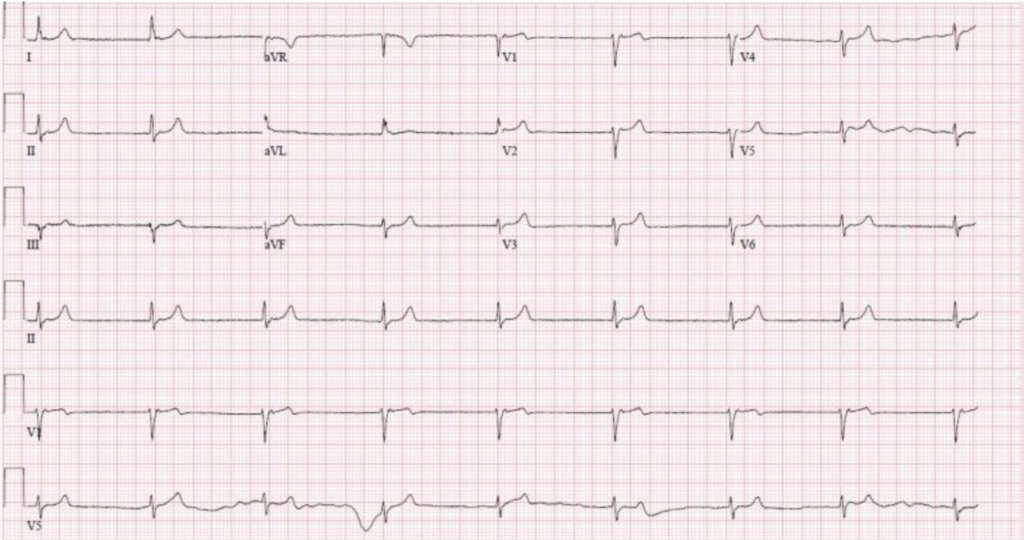History
A 45-year-old male with a history of HIV/AIDS presents to the emergency department with complaints of persistent headaches, fever, and confusion for the past two weeks. The patient reports experiencing photophobia and nausea but denies any history of recent travel or exposure to sick contacts.
Examination
General Examination
- Temperature: 38.5°C (101.3°F)
- Blood Pressure (BP): 110/70 mmHg
- Heart Rate (HR): 110 beats per minute
- Respiratory Rate (RR): 18 breaths per minute
- Oxygen Saturation (SpO2): 98% on room air
- General Appearance: Alert but confused, mildly distressed
Neurological Examination
- Level of Consciousness: Disoriented to time and place
- Glasgow Coma Scale (GCS) Score: 14/15
- Neck Stiffness: Present
- Kernig’s Sign: Positive
- Cranial Nerves: No focal deficits
- Motor and Sensory Function: Intact
- Reflexes: Normal
Systemic Examination
- Cardiovascular Examination: Normal S1 and S2, no murmurs
- Respiratory Examination: Clear breath sounds bilaterally
- Abdominal Examination: Soft, non-tender, no organomegaly
- Skin Examination: No rashes or lesions
Diagnostic Workup
Laboratory Tests
- Complete Blood Count (CBC): Mild leukocytosis
- CD4 Count: <100 cells/mm³ (indicating severe immunosuppression)
- Liver Function Tests (LFTs): Within normal limits
- Renal Function Tests (RFTs): Within normal limits
Imaging
- CT Scan of the Brain: Normal, with no evidence of mass effect or hydrocephalus
Lumbar Puncture
- Opening Pressure: Elevated (>200 mm H2O)
- Cerebrospinal Fluid (CSF) Analysis:
- Cell Count: Elevated white cell count with lymphocytic predominance
- Protein: Elevated
- Glucose: Low
- India Ink Stain: Positive for encapsulated yeast cells
- Cryptococcal Antigen Test: Positive
Culture
- CSF Culture: Growth of Cryptococcus neoformans
Pathophysiology
Cryptococcus neoformans is an encapsulated yeast found ubiquitously in the environment, particularly in soil contaminated with bird droppings. It enters the human body via inhalation, initially infecting the lungs. In immunocompromised hosts, it can disseminate hematogenously, with a predilection for the central nervous system (CNS), causing meningoencephalitis.
Virulence Factors
- Polysaccharide Capsule: Protects against phagocytosis and immune response
- Melanin Production: Provides resistance against oxidative stress
- Urease Production: Contributes to pathogenicity by modulating the immune response
Management
Antifungal Therapy
- Induction Phase:
- Liposomal Amphotericin B (3-4 mg/kg/day) + Flucytosine (100 mg/kg/day in four divided doses) for at least two weeks
- Consolidation Phase:
- Fluconazole (400 mg/day) for eight weeks
- Maintenance Therapy:
- Fluconazole (200 mg/day) for at least one year or until immune reconstitution
Adjunctive Therapies
- Management of Elevated Intracranial Pressure: Frequent lumbar punctures or placement of a ventriculoperitoneal shunt
- Immune Reconstitution Inflammatory Syndrome (IRIS): Careful monitoring and possible use of corticosteroids in severe cases
Prognosis
The prognosis of cryptococcal meningitis largely depends on the timeliness of diagnosis and the patient’s immune status. With appropriate treatment, the mortality rate can be significantly reduced. However, delays in treatment or inadequate management can lead to severe neurological sequelae or death.
Prevention
- Primary Prophylaxis: Not routinely recommended but may be considered in highly endemic areas or individuals with very low CD4 counts
- Secondary Prophylaxis: Maintenance therapy with fluconazole is essential to prevent relapse in patients with a history of cryptococcosis
Conclusion
Cryptococcus neoformans remains a major cause of morbidity and mortality among immunocompromised individuals. Early recognition, prompt diagnostic workup, and aggressive antifungal therapy are crucial in improving patient outcomes. Ongoing research and advancements in treatment strategies continue to enhance the management of this life-threatening infection.
